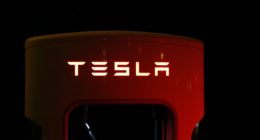With an insistent competition to become the first one to drive its fully self-driving vehicles on public roads, Tesla has tweaked its data sharing policy to make it easier for them to gather data. The real-world data collected from existing Tesla electric vehicles is extremely necessary to teach the vehicles about the signals it should be on the lookout for.
As part of its most recent Autopilot update, Tesla has not only dispensed new and improved features but also made a minor change to their data sharing policies as well. It now mentions that the automaker wants to accelerate the process of making self-driving vehicles a reality by collecting ‘short video clips’ from the all-electric car’s external cameras. This development was first reported by Electrek.
The videos collected from Tesla owners will provide the company access to footage that enables the AI-powered system to learn how to ‘recognize things like lane lines, street signs, and traffic light positions’ among other paltry cues from our surroundings. Now, you must be anxious about your car’s privacy (probably access to your location, at most times) but, as expected, the automaker is keeping the data pool totally anonymous.
The automaker has rebuffed any worries about your vehicle’s privacy. It specifies that short videos collected would be separated from your vehicle’s identification number — meaning no one will be able to track your ride back home. Also, Tesla mentions that intruders or anyone else can also not search the video library for clips associated with any particular vehicle.
The complete message delivered to Tesla owners about change in data policy reads as under:
We are working hard to improve autonomous safety features and make self-driving a reality for you as soon as possible.
In order to do so, we need to collect short video clips using the car’s external cameras to learn how to recognize things like lane lines, street signs, and traffic light positions. The more fleet learning of road conditions we are able to do, the better your Tesla’s self-driving ability will become.
We want to be super clear that these short video clips are not linked to your vehicle identification number. In order to protect your privacy, we have ensured that there is no way to search our system for clips that are associated with a specific car.
There is currently no information on how Tesla plans to transmit videos collected by a particular vehicle back to their data centers to teach the Autopilot how to drive autonomously. We’ve contacted Tesla to know more about this process, which has been debuted at a significant time.
The automaker is presently gearing up to release its mass-production Tesla Model 3 vehicle in the coming September. It also packs all the necessary self-driving hardware (i.e 8 cameras, all-around ultrasonic sensors, and a forward-looking radar) that’ll enable Tesla to gather a huge treasure trove of video data. And this falls in line with Musk’s comments about cameras being a specially powerful tool and the only requirement for self-driving vehicles. He isn’t looking to follow others and adopt LiDAR sensors to built its self-driving tech.





